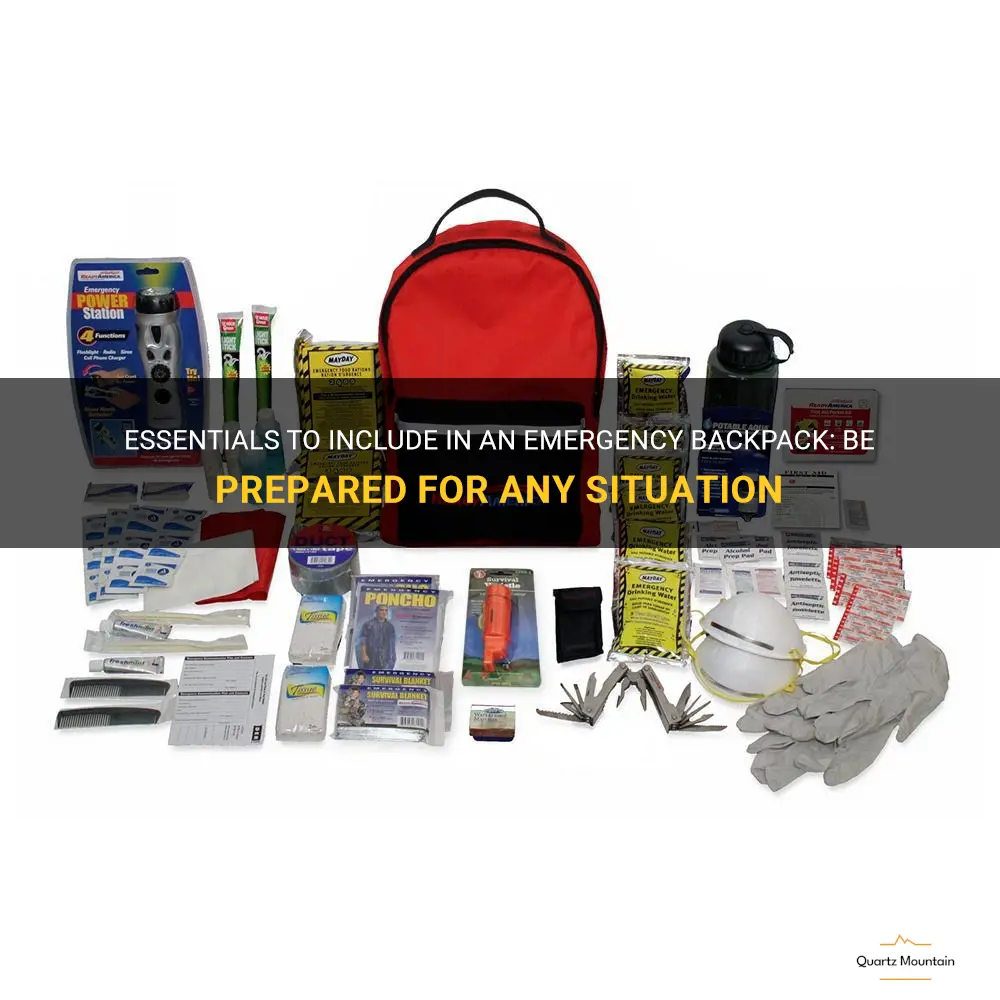
In a world riddled with uncertainty, it's becoming increasingly important to be prepared for any situation. From natural disasters to unexpected emergencies, having an emergency backpack stocked with the right essentials could mean the difference between life and death. But what exactly should be included in this must-have backpack? Join us as we explore the essentials to include in an emergency backpack, ensuring that you are ready for whatever comes your way.
What You'll Learn
- What essential items should be included in an emergency backpack?
- How much food and water should be packed in an emergency backpack?
- Are there specific clothing items that should be included in an emergency backpack?
- What should be included in a first aid kit for an emergency backpack?
- Are there any additional items that should be considered for an emergency backpack, such as a portable phone charger or personal hygiene products?

What essential items should be included in an emergency backpack?
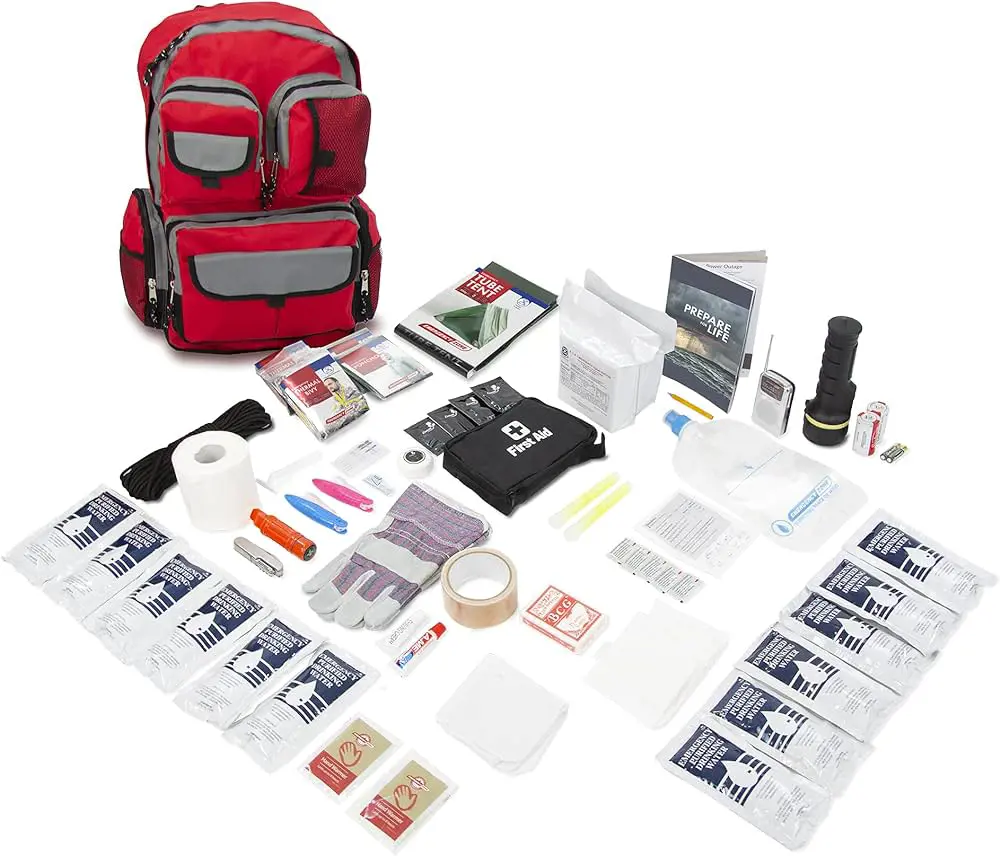
An emergency backpack, also known as a go bag or bug out bag, is a crucial item to have in case of an emergency or disaster. When disaster strikes, you may not have time to gather essential items, so having a well-prepared backpack ready to go can make all the difference. But what exactly should be included in an emergency backpack? In this article, we will discuss the essential items that should be included to ensure you are prepared for any emergency.
- Water: The first and most important item to include in your emergency backpack is water. It is recommended to have at least one gallon of water per person per day for at least three days. This will ensure you have enough water for drinking, cooking, and sanitation purposes.
- Non-perishable Food: Along with water, you should also include non-perishable food items in your emergency backpack. Aim for foods that are easy to prepare and do not require refrigeration. Some examples of suitable food items include canned goods, energy bars, and dry foods such as rice or pasta.
- First Aid Kit: A well-equipped first aid kit is essential in any emergency situation. Make sure to include bandages, antiseptic wipes, pain relievers, and any necessary prescription medications. Additionally, it is important to include any personal items such as glasses or contact lenses that you may need.
- Flashlight and Extra Batteries: In an emergency situation, it is highly likely that you will experience a power outage. Having a reliable flashlight with extra batteries can be a lifesaver. LED flashlights are recommended due to their long battery life.
- Personal Hygiene Items: It is important to maintain personal hygiene, even in an emergency situation. Include essential items such as toilet paper, toothbrush and toothpaste, hand sanitizer, and wet wipes. These items will help you stay clean and prevent the spread of germs.
- Extra Clothing and Blankets: Depending on the situation, you may need to evacuate your home and find shelter elsewhere. Therefore, it is important to have extra clothing and blankets in your emergency backpack to ensure you stay warm and comfortable. Pack clothes suitable for the climate you live in, and don't forget to include sturdy shoes.
- Communication Devices: In an emergency situation, it is important to have a way to communicate with others. Include a fully charged cellphone with a portable charger, as well as a battery-powered radio to stay informed about the situation and receive updates.
- Tools and Supplies: It is crucial to have basic tools and supplies in your emergency backpack. This can include a multi-purpose tool, duct tape, a whistle, a compass, and a lighter or matches. These items can be invaluable in a variety of emergency scenarios.
- Important Documents: Make sure to include copies of important documents such as identification cards, passports, and insurance policies. Keep these documents in a waterproof container to protect them from damage.
- Cash and Spare Change: In an emergency situation, ATMs and banks may be inaccessible or closed. It is important to have some cash and spare change on hand for emergencies or if electronic payment systems are not functioning.
Remember, everyone's emergency backpack may vary slightly based on individual needs and circumstances. It is important to regularly review and update your emergency backpack to ensure that everything is in working order and meets your specific needs. By being prepared and having a well-stocked emergency backpack, you can greatly increase your chances of survival and minimize the impact of any emergency or disaster.
What to Pack for a Rehab Retreat in Turtle Creek: Your Essential Checklist
You may want to see also

How much food and water should be packed in an emergency backpack?
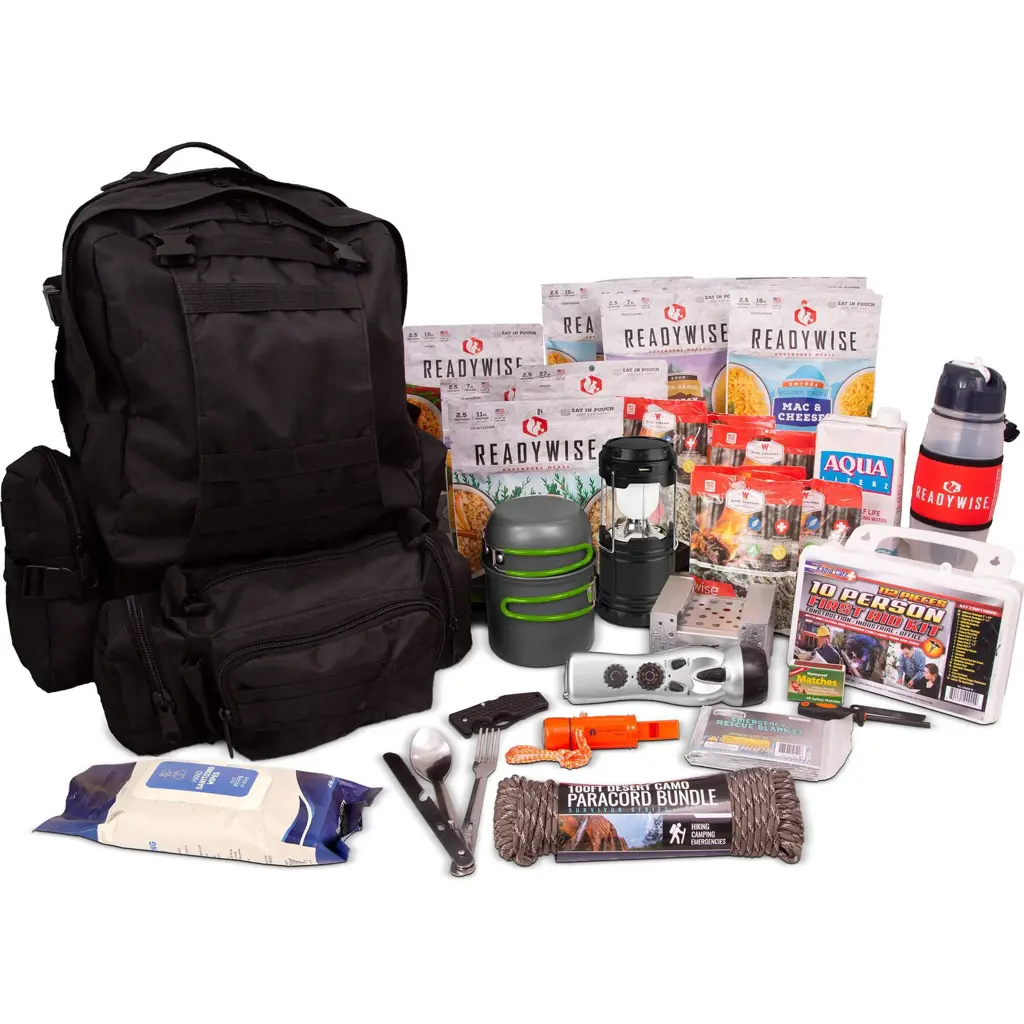
In emergency situations, having a well-stocked emergency backpack is crucial. Among the essential items to pack, food and water play a vital role in ensuring survival and maintaining proper nutrition. Let's discuss how much food and water should be packed in an emergency backpack to be well-prepared.
The general rule when it comes to food in an emergency backpack is to aim for about 2,000 to 2,400 calories per day. This target is based on the average caloric intake required for an adult to maintain their energy levels. Packing enough food to meet this calorie requirement for at least three days is recommended, as it allows for a sufficient buffer in case of extended emergencies. Additionally, it is advisable to choose non-perishable food items that require minimal preparation and have a long shelf life.
A variety of food options should be considered to ensure a balanced diet during an emergency. Canned goods, such as fruits, vegetables, and meats, are excellent choices as they provide necessary vitamins and minerals. Protein-rich items like nut butter, canned tuna, and beans should also be included. Energy bars, granola, and trail mix are good sources of quick energy and can help curb hunger between meals. It is important to note that personal dietary restrictions and preferences should be taken into account when choosing these food items.
The amount of water to pack in an emergency backpack depends on various factors, including climate, environmental conditions, and individual needs. As the human body is primarily composed of water, staying properly hydrated is essential for survival. The standard recommendation is to have at least one gallon (3.8 liters) of water per person per day. This amount covers drinking, cooking, and basic hygiene needs. In hot climates or during physically demanding situations, the water requirement may increase, so it is crucial to stay aware of the conditions in which the emergency backpack will be used.
To conserve space and reduce weight, it is advisable to pack lightweight, pouch-packaged water or water purification tablets. These allow for easy storage and rehydration, ensuring a sufficient water supply during emergencies. Additionally, familiarize yourself with water sources in your surroundings, such as nearby streams or rivers, that can be utilized with proper water treatment or filtration systems in case the initial water supply runs out.
In addition to food and water, other considerations must be taken into account when packing an emergency backpack. Essential items include a first aid kit, a flashlight, extra batteries, a multi-tool, a portable stove, a map of the area, and any necessary medications. It is also important to tailor the contents of the backpack based on the specific needs of individuals within the household, such as infants, elderly individuals, or individuals with special dietary restrictions or medical conditions.
In summary, packing enough food and water in an emergency backpack is essential for survival during critical situations. Aim for providing 2,000 to 2,400 calories per day and choose non-perishable items that require minimal preparation. Include a variety of foods to ensure a balanced diet. As for water, aim for at least one gallon per person per day and consider climate and individual needs. Additionally, don't forget to include other necessary items tailored to your specific needs. Being well-prepared ensures the best chances of survival and safety during emergencies.
Essential Items to Pack for a Solo Eur etrip
You may want to see also

Are there specific clothing items that should be included in an emergency backpack?
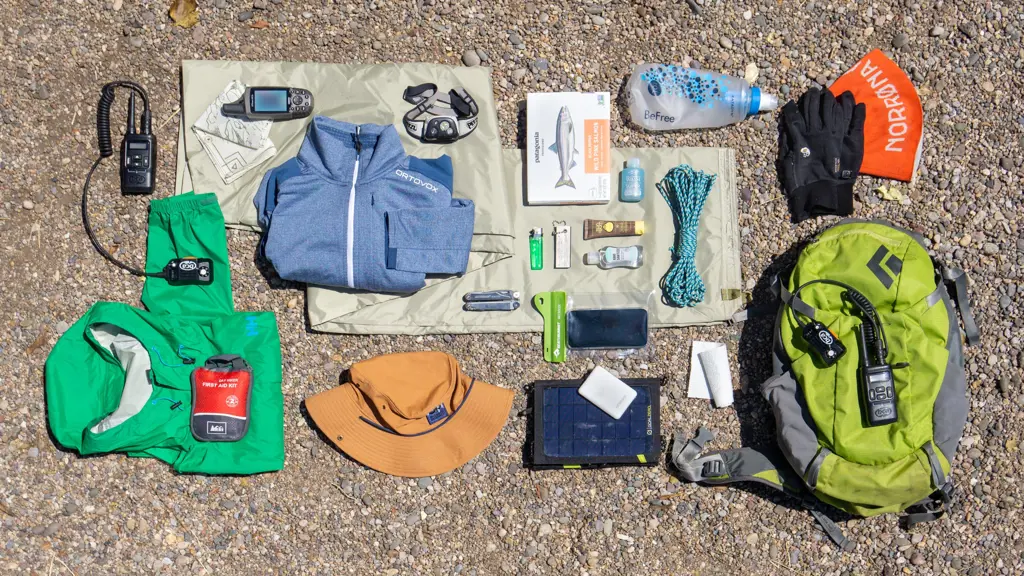
In an emergency situation, it is crucial to have a well-prepared backpack that contains all the necessary items to sustain and protect oneself. While food, water, and medical supplies are often the focus, clothing items should not be overlooked. Having the right clothing can provide comfort, protection, and increase chances of survival. Here are some specific clothing items that should be included in an emergency backpack:
- Layered clothing: It is important to have multiple layers of clothing to adjust to changing weather conditions. This includes a base layer made of moisture-wicking material to keep the body dry and insulated. A mid-layer made of fleece or wool provides warmth, while an outer layer, such as a waterproof jacket or windbreaker, protects against rain, snow, and wind.
- Extra socks: Keeping your feet dry is crucial in an emergency situation to prevent blisters and frostbite. Pack several pairs of thick, moisture-wicking socks to change into if needed. Look for socks made of merino wool or synthetic materials that offer insulation and moisture management.
- Sturdy footwear: Your choice of footwear can greatly impact your ability to navigate your surroundings. Opt for sturdy, waterproof boots with good traction. Hiking boots or waterproof trail running shoes are ideal for both urban and wilderness emergencies.
- Hat and gloves: A hat and gloves are essential for protecting your extremities from cold temperatures. A beanie or wool hat will help retain body heat, while gloves will keep your hands warm and protected. Consider packing an extra pair of gloves in case they get wet or damaged.
- Bandana or shemagh: A versatile piece of fabric like a bandana or shemagh can serve multiple purposes. It can be used as a face mask, head covering, or makeshift sling. It can also be tied around the neck to protect against sun exposure or used as an improvised water filter.
- Reflective clothing or tape: In the event of being lost or needing to signal for help, reflective clothing or tape can aid in visibility. Add a hi-visibility vest or reflective tape to your backpack to increase your chances of being spotted by search and rescue teams.
- Sunglasses: Protecting your eyes from harmful UV rays is essential in sunny conditions. Sunglasses will not only shield your eyes from the sun but also reduce glare and improve visibility. They can also be used as a signaling device by reflecting light towards potential rescuers.
Remember to choose clothing items that are lightweight, durable, and appropriate for the climate you may encounter. Also, consider personal preferences and any specific needs you or your family members may have.
In addition to these specific clothing items, it is important to regularly review and update your emergency backpack to ensure everything is in good condition and up-to-date. Replace worn-out or expired items and adapt your clothing choices according to the current season or climate. By being prepared with the right clothing, you can increase your chances of staying safe and comfortable during an emergency.
Understanding the Hierarchy of Ownership in a Dog Pack
You may want to see also

What should be included in a first aid kit for an emergency backpack?
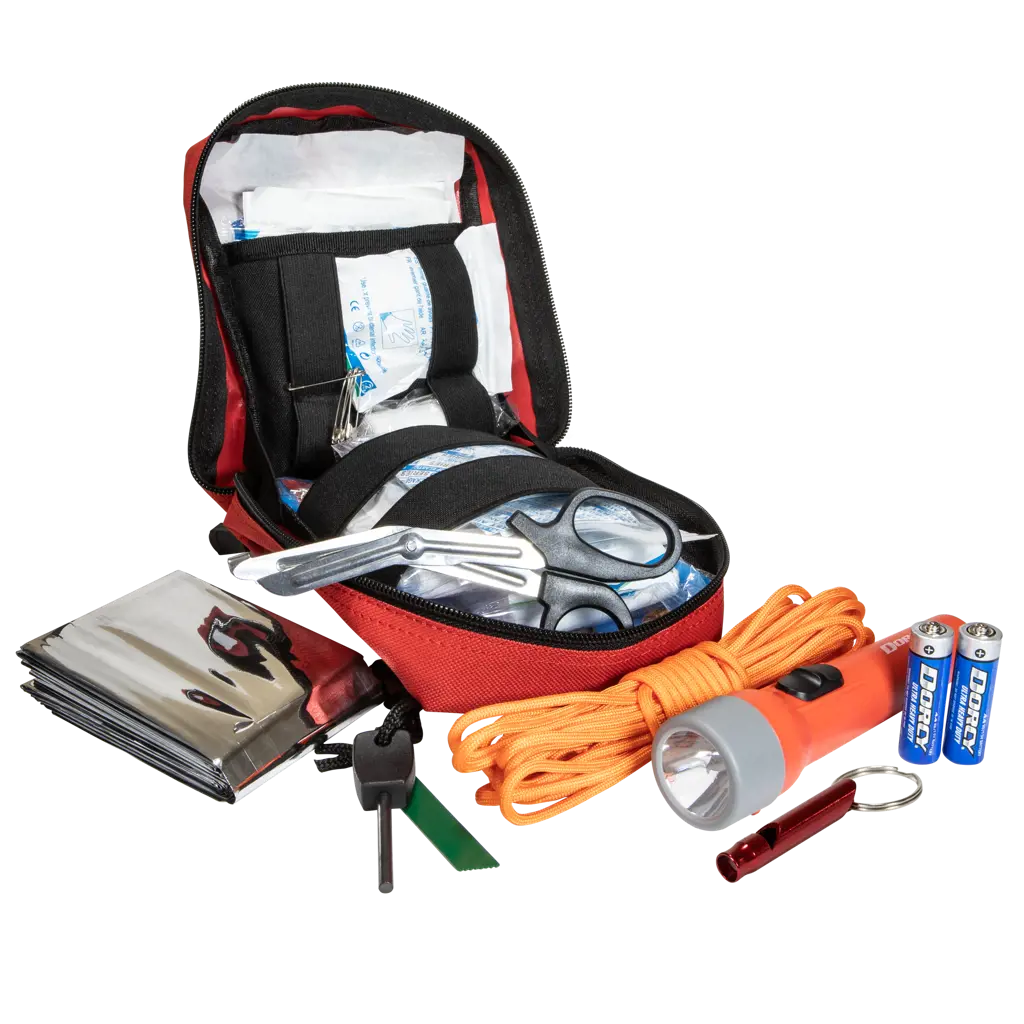
A first aid kit is an essential item to have in any emergency backpack. It contains supplies and equipment that can be used to provide immediate medical assistance in case of injuries or medical emergencies. When assembling a first aid kit for an emergency backpack, it is important to include items that can address common injuries and ailments that may occur during emergencies. Here are some important items that should be included in a first aid kit for an emergency backpack:
- Bandages: Various sizes of adhesive bandages should be included to cover cuts, scrapes, and burns. It is advisable to have a mix of different sizes to accommodate various types of injuries.
- Sterile gauze pads: These are used to clean wounds and can be applied to stop bleeding before bandaging. It is recommended to have a few different sizes of sterile gauze pads in the kit.
- Antiseptic wipes: These wipes are used to clean the skin before applying bandages or dressing wounds. They help prevent infection and should be included in the first aid kit.
- Adhesive tape: Adhesive tape is useful for securing bandages and dressing wounds. It should be included to ensure that bandages stay in place and wounds are properly covered.
- Scissors: A pair of small, sharp scissors should be included to cut tape, clothing, or other materials if needed during a medical emergency.
- Tweezers: Tweezers are useful for removing splinters or other foreign objects from the skin. They should be included to address minor injuries that may occur during emergencies.
- Disposable gloves: Disposable gloves should be included to protect both the responder and the injured person from the risk of infection. They should be worn while providing first aid and should be disposed of properly after use.
- Pain relievers: Over-the-counter pain relievers such as acetaminophen or ibuprofen can be included in the first aid kit to address pain or fever that may occur during emergencies.
- Cold pack: A cold pack can be used to reduce swelling or relieve pain in case of sprains, strains, or bruises. It should be included in the first aid kit to provide immediate relief.
- CPR mask: A CPR mask is an important item to include in a first aid kit for emergencies. It provides a barrier between the responder and the injured person during cardiopulmonary resuscitation (CPR) and helps prevent the transmission of infectious diseases.
- Emergency contact information: It is important to include a list of emergency contacts, including phone numbers for local emergency services and personal contacts, in the first aid kit. This can be crucial during emergencies when immediate assistance is needed.
Remember to regularly check and restock your first aid kit to ensure that all items are in good condition and not expired. Additionally, it is important to receive proper training in first aid and CPR to effectively use the items in the first aid kit during emergencies.
The Essential Packing Guide for an August River Cruise
You may want to see also

Are there any additional items that should be considered for an emergency backpack, such as a portable phone charger or personal hygiene products?
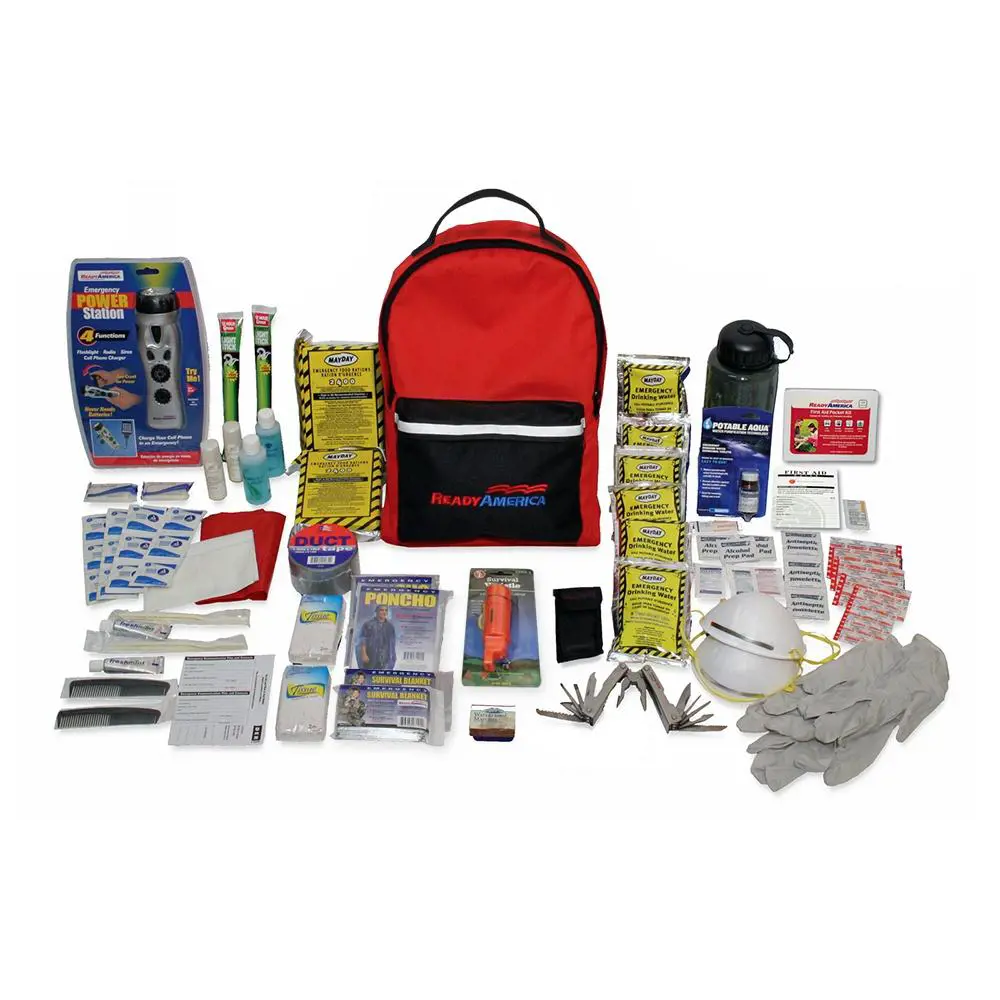
When it comes to preparing for emergencies, having an emergency backpack is essential. This backpack should contain everything you would need to survive for at least 72 hours in case of a disaster or evacuation. While there are standard items that should be included in an emergency backpack, such as food, water, and first aid supplies, there are also some additional items that should be considered.
One such item is a portable phone charger. In an emergency situation, communication is key, and having a fully charged phone can be extremely valuable. A portable phone charger can ensure that you have a way to charge your phone even if the power is out or you are away from sources of electricity. This can be particularly important if you need to call for help or communicate with loved ones during a disaster.
Another item that should be considered is personal hygiene products. While it may not seem like a priority in an emergency situation, maintaining personal hygiene is important for both physical and mental well-being. Items such as toilet paper, wet wipes, hand sanitizer, and soap can help you stay clean and prevent the spread of germs. Additionally, items like toothpaste, toothbrushes, and menstrual products should also be included for personal care.
It is also important to consider any specific personal needs or medical conditions when packing an emergency backpack. For example, if you have a medical condition that requires medication, make sure to include a sufficient supply in your backpack. Similarly, if you have allergies or sensitivities, include any necessary medications or accommodations.
Additionally, it is a good idea to include important documents and copies of important information in your emergency backpack. This can include copies of identification, insurance policies, and contact information for friends and family. These documents can be invaluable in the event that you need to prove your identity or access important information during an emergency.
Lastly, consider including some comfort items in your emergency backpack. These can be things like a small blanket, a deck of cards, or a book. These items can provide comfort and help pass the time during stressful situations.
When packing an emergency backpack, it is important to consider both the basic necessities and any additional items that may be necessary for your specific needs. A portable phone charger, personal hygiene products, medication, important documents, and comfort items are all examples of additional items that should be considered. By being prepared and including these items in your emergency backpack, you can help ensure your safety and well-being during an emergency situation.
Essential Items to Pack in Your Disney World Pool Bag
You may want to see also
Frequently asked questions
When packing an emergency backpack, it is important to include essential items such as water, non-perishable food, a flashlight with extra batteries, a first aid kit, and a multi-tool. These items will help provide you with the necessary resources to sustain yourself during an emergency situation.
It is recommended to pack at least one gallon of water per person, per day, for a minimum of three days. Water is vital for hydration and can also be used for cleaning wounds and rehydrating food. Be sure to include water purification tablets or a filter in your backpack as well.
It is advisable to pack enough non-perishable food to last each person at least three days. Look for food items that are easy to store and do not require refrigeration or cooking. Examples include canned goods, energy bars, peanut butter, and dried fruits. Remember to check the expiration dates regularly and replace any expired items.
In addition to water, food, and a first aid kit, there are several other items that are important to include in an emergency backpack. These may include a change of clothes, a waterproof jacket, a blanket or sleeping bag, a whistle to signal for help, a battery-powered or hand-crank radio, extra cash, important documents (such as identification and insurance papers), personal hygiene items (such as toilet paper and hand sanitizer), and any necessary medications. It is also a good idea to include a list of emergency contacts and a map of your area.







